Of all the science standards that I teach, I think Growth and Changes in Plants has got to be one of the most fun. When you see the excitement on your student’s faces at the way their plants are growing, it makes all of your hard work worthwhile! If the thought of teaching Growth and Changes in Plants doesn’t bring you the same thrill it does me, these new, creative activities just might change your mind! Here are my favorite hands-on activities to engage your students and make learning about Growth and Changes in Plants extra fun!
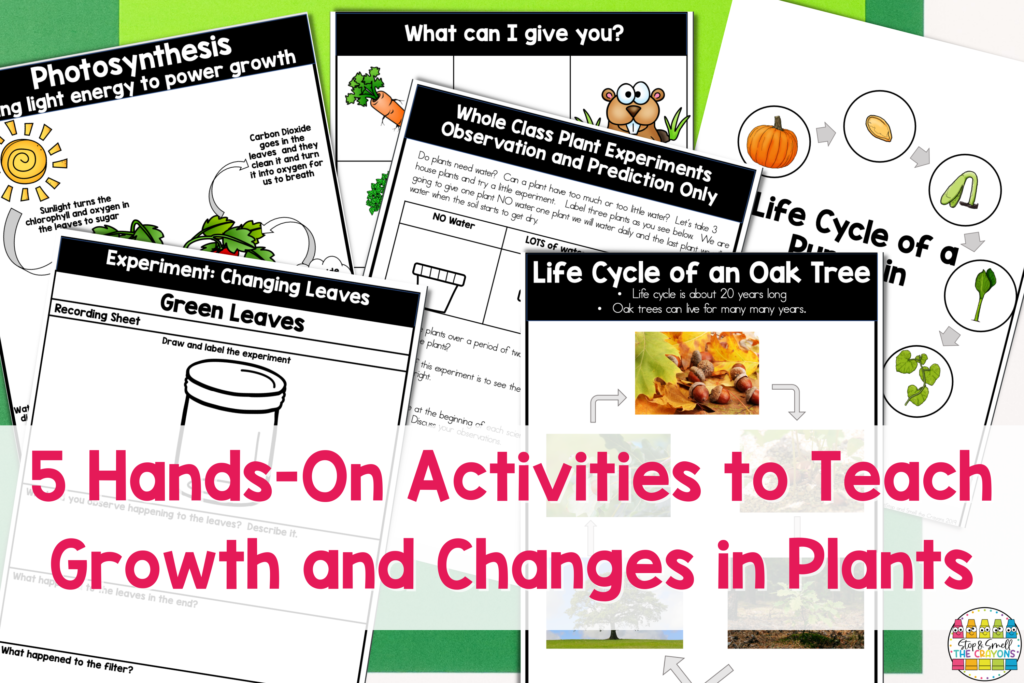
This post contains affiliate links. This means I make a small commission at NO EXTRA CHARGE to you when you purchase through my links. Thank you for supporting my family and me! You can read my entire disclosure statement here.
1. Growth and Changes Plant Experiments
It’s safe to say that we all have done that lesson where we plant a bean seed, hang it in the window, and watch it grow. Yes, it is an effective way for students to see how plants grow from a seed. But let’s change it up a bit! Try experimenting with established plants! It’s fun to watch seeds germinate and that has its place when teaching germination. However, by using established plants that are already growing and developed, it takes less time to show the effects of certain controls.
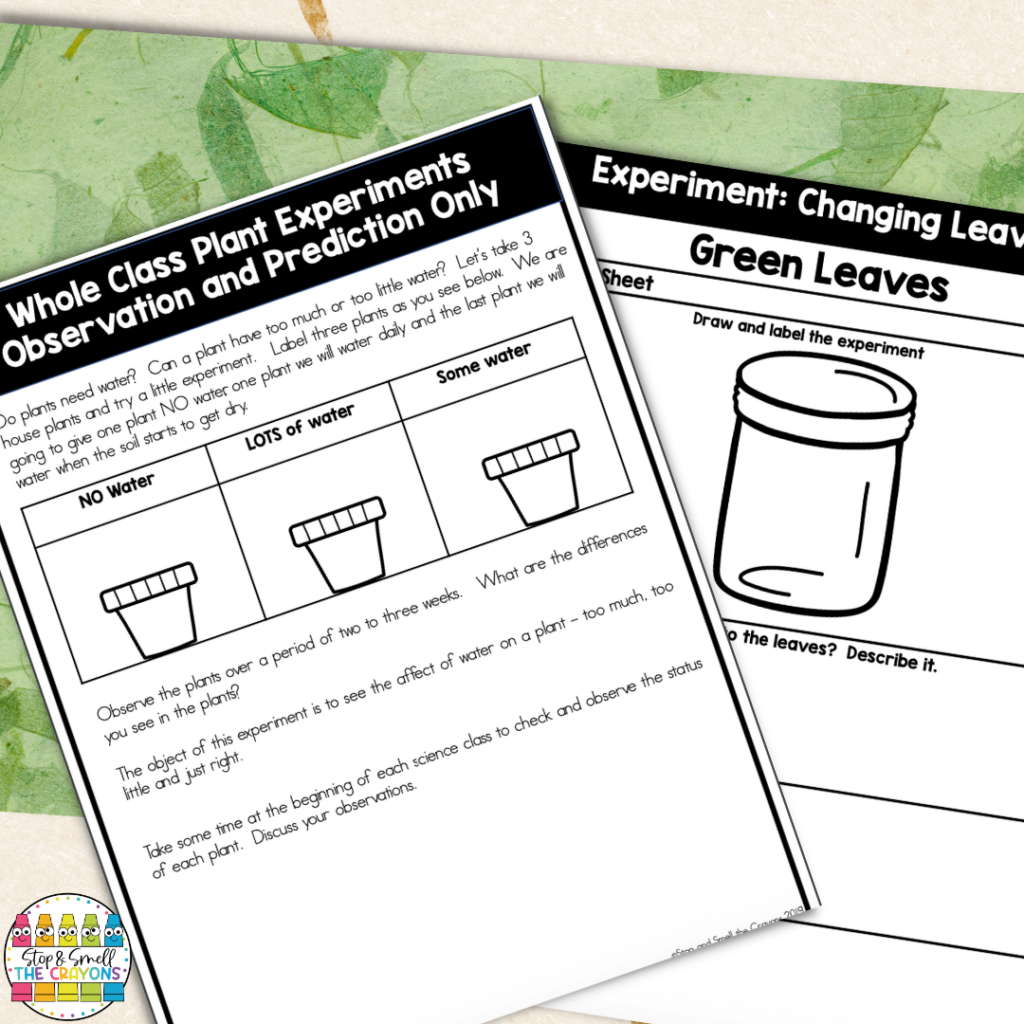
You want students to learn what plants need to be healthy and grow well. Start by brainstorming ideas of what your students think plants need. Then, using several of the same types of seedlings, simply change the controls to see what affects growth. Here are some control ideas to use with your plants:
- Keep one plant in the dark and one in the light
- Plant seedlings in different soils (loam, clay, sand)
- Place one plant in a cold environment and another in a hot environment
- Differentiate the amount of water you give each plant
- Change the air quality for each plant
Explain to your students that they will be responsible for carefully observing their plants each day. Give them time each day to make observations and talk with their friends about what they saw and think. Students could have a journal to keep notes and drawings on what they see or the whole class could record observations on an anchor chart. For even more fun, ask your students to make predictions about what they think the effects of each control will be!
The purpose of these experiments is for students to experience firsthand what makes a plant grow the best, healthiest, and fastest. The best way for this to happen is to see the effects, and draw conclusions for themselves!
2. Vegetable Cuttings Illustrate Plant Growth and Changes

Did you know that some plants and vegetables will grow again and again? It’s true! Plants like romaine lettuce, celery, beets, pineapple, potatoes, and more will all continue to grow from a cutting.
Simply take a stem cutting that is around 4 inches long.
Cut the leaves off of the lower half of the stem cutting and leave a few leaves at the top of the stem. Put the stem cutting in a glass or jar of water. The water needs to be high enough to cover the bottom inch of the stem cutting.
Keep the jar in a warm, well-lit place, but not in direct sunlight. Be sure to change the water every couple of days to keep bacteria from growing. Also, make sure the stem cutting is always underwater. Your students will be in awe when, in a few weeks, or less, roots should begin to form on the stem cutting!

What stem cuttings should you use with your students? Here are some of my classes’ more successful replants:
- Romaine Lettuce
- celery
- basil
- beets
- mushrooms
- onions
- pineapple
- potatoes
- rosemary
- sweet potatoes
- turnips
Root plant cuttings are an amazing and easy way to teach your students about plant growth! They provide a hands-on, visual way to observe the process of root development. And they just look so cool! Not sure how or where to start? Check out this informative blog post from A Piece of Rainbow.
3. The Root System
Since we’re on the subject of roots, let’s jump into teaching your students why roots play an important role in the survival of the plant. Roots anchor the plant in the ground and keep them from falling over.
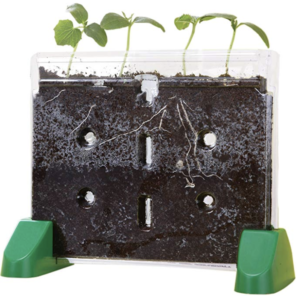
I bought this see-through planter from Amazon and we grew bean seeds in it to show students how roots grow, gather water, and spread out to gather nutrients from the soil. This was a terrific learning tool for the students to see that the roots grow first and how they do their job.
Try growing your rooted vegetable cuttings in this planter box so students can see the cycle of the roots growing into the plant!
There is also the classic celery stalk in colored water (which turns the stem and leaves the color of the water) experiment to show how plants drink. I think we have all done the white carnation in food-colored water to turn the petals of the carnation to the color of the water too. These are always good to review as well, but I find as I teach grade 3 they have more than likely done these experiments in previous grades.
4. Hairy Heads

Grass seeds are my favorite thing to grow because honestly, they have always worked! And grass looks like hair so we make Hairy heads!
To do this, I drop 2 scoops of grass seeds into a stocking and then add dirt and tie it off.
Soak the stocking overnight in water and the next day take it out of the water, turn it so the grass seeds point skyward, and set it on the windowsill to grow!
I find that if you place it in a styrofoam cup it helps keep it moist and then you can water it as your hairy head grows.
5. Eat Plants?!?
Using what we learned from the rerooting vegetable experiment, we as a class “grow a salad”. My students love growing their own root vegetables, but eating them is a whole other level of awesome!
We have a “feast day” where we eat the fruits of our labors. I provide the lettuce and often a few extras such as broccoli, cauliflower, tomatoes, etc… especially if our root vegetables didn’t provide enough food for everyone to get a taste.
I give my students directions for things I want them to do while they’re eating, such as to look at their salad and:
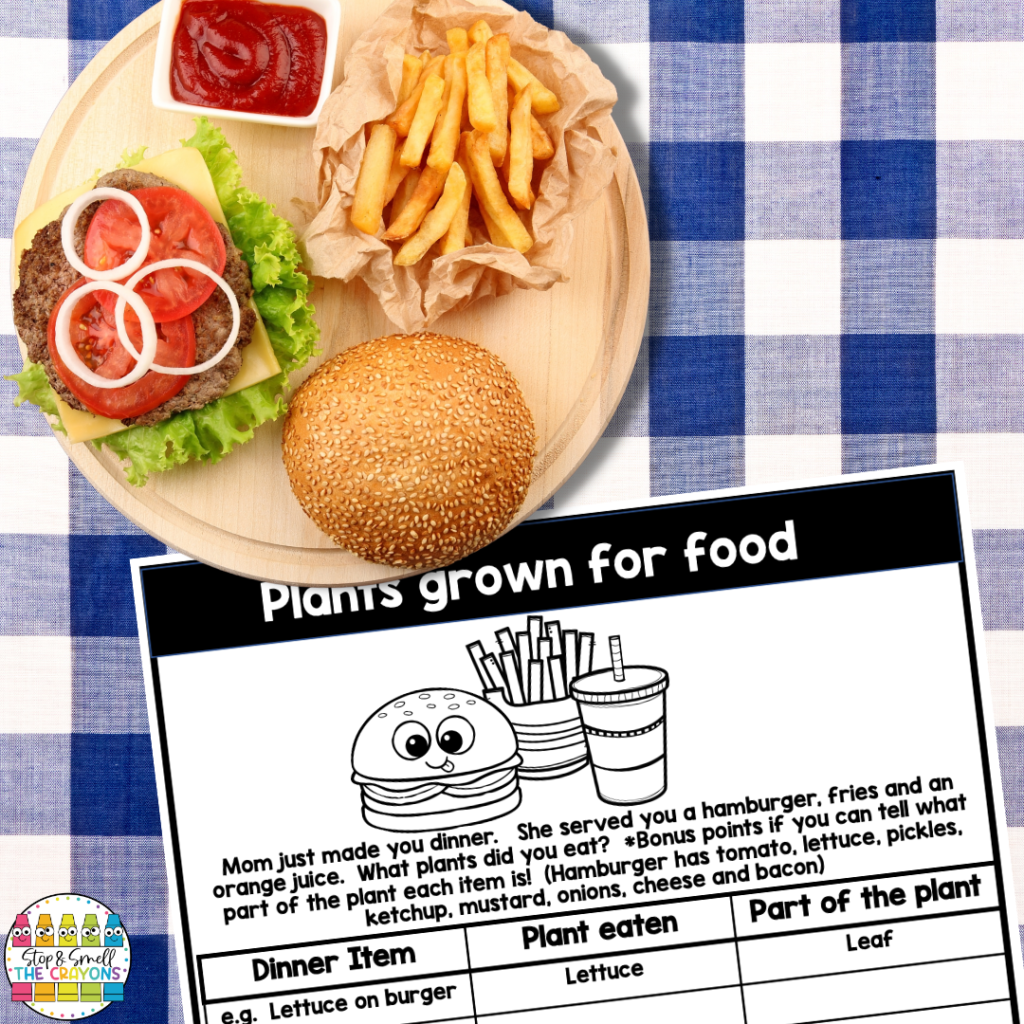
- find a flower and eat it
- eat a stem
- or chomp a root
Students get a kick out of eating stems, leaves, flowers, and roots! As they eat, they are identifying parts of the plant and really understand the concept of plants as food. This is also a great place to incorporate the book Tops & Bottoms by Janet Stevens.
It may seem like a no-brainer that plants are food, but many students don’t know this. And if they do, they often can’t identify which part of the plant they are eating. So for this reason, I often teach a “plants are food” lesson before we ever eat our salads.
In my Growth and Changes in Plants resource, I have an entire lesson on this concept- complete with picture cards, a sorting activity, and a “Plants grown for food” chart that is a perfect complement to the above “Feast Day” activity!
Ready to Teach Growth and Changes in Plants?
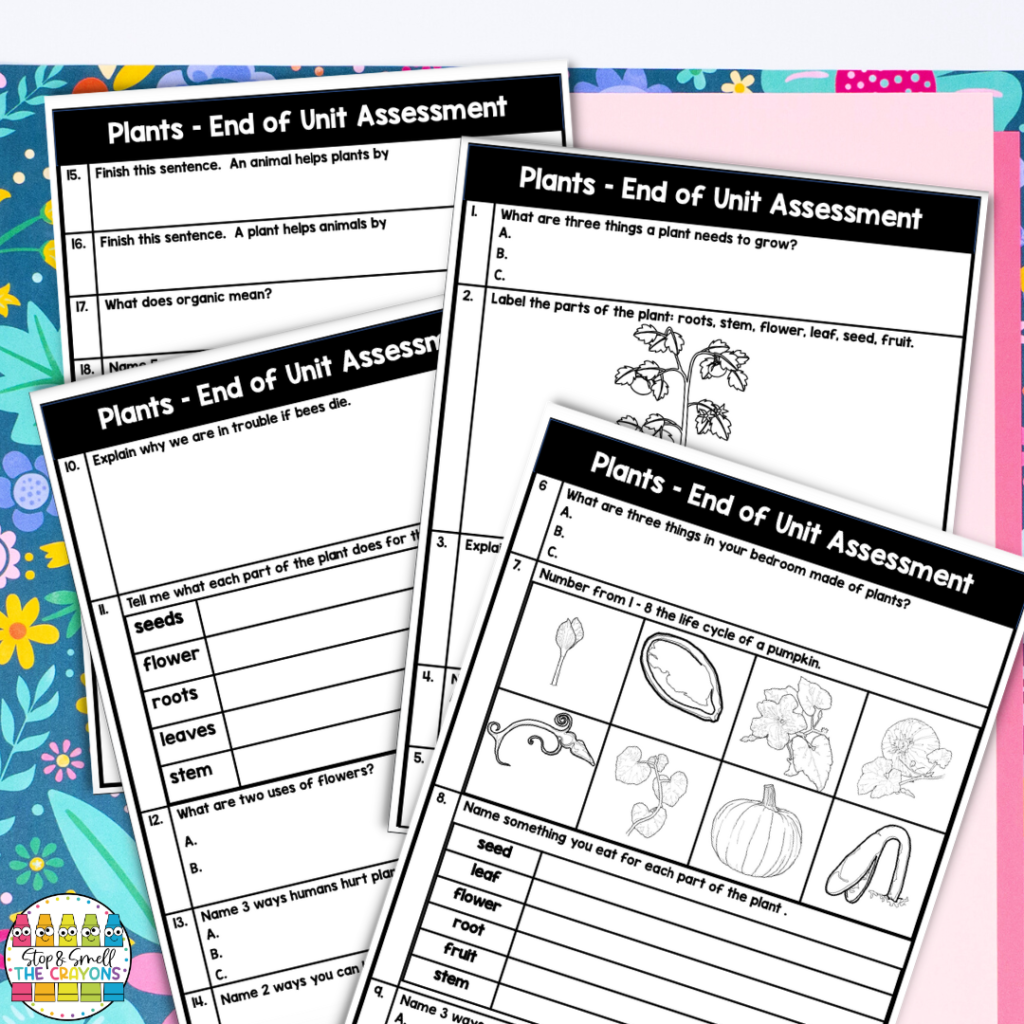
With all the fun hands-on plant activities I have shared, I hope you’ve found several to use in your classroom! Not only are these activities engaging for your students, but they are sure to make your teaching fun as well!
If you loved these ideas, then check out the done-for-you lesson plans and activities in my Growth and Changes in Plants resource! This unit incorporates the concepts that I mentioned in this post and so much more! You’ll find student printable activities, beautifully illustrated vocabulary cards, and a unit test that assesses your students’ comprehension of everything you have taught! Your teacher self will thank you for making their life so much easier!
You can find all of these ready to use resources for your plant unit in my TPT store. Fill your lesson plans with these fun and engaging plant activities and save time too!

Be sure to grab this Free Growth and Changes in Plants Checklist. While this is created for the Grade 3 Ontario Science Curriculum, it can be used by anyone! Simply click on the image below to download
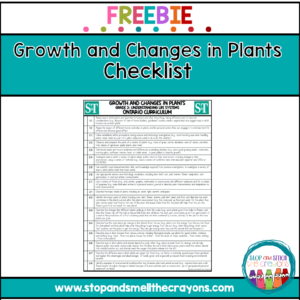
More Grade 3 Science Resources
If you are looking for more engaging and hands-on science resources for third grade, check out these posts:
Pin this Blog Post on Pinterest!
Don’t lose these creative teaching ideas for Growth and Changes in Plants! Pin this post to your favorite science Pinterest Board!
